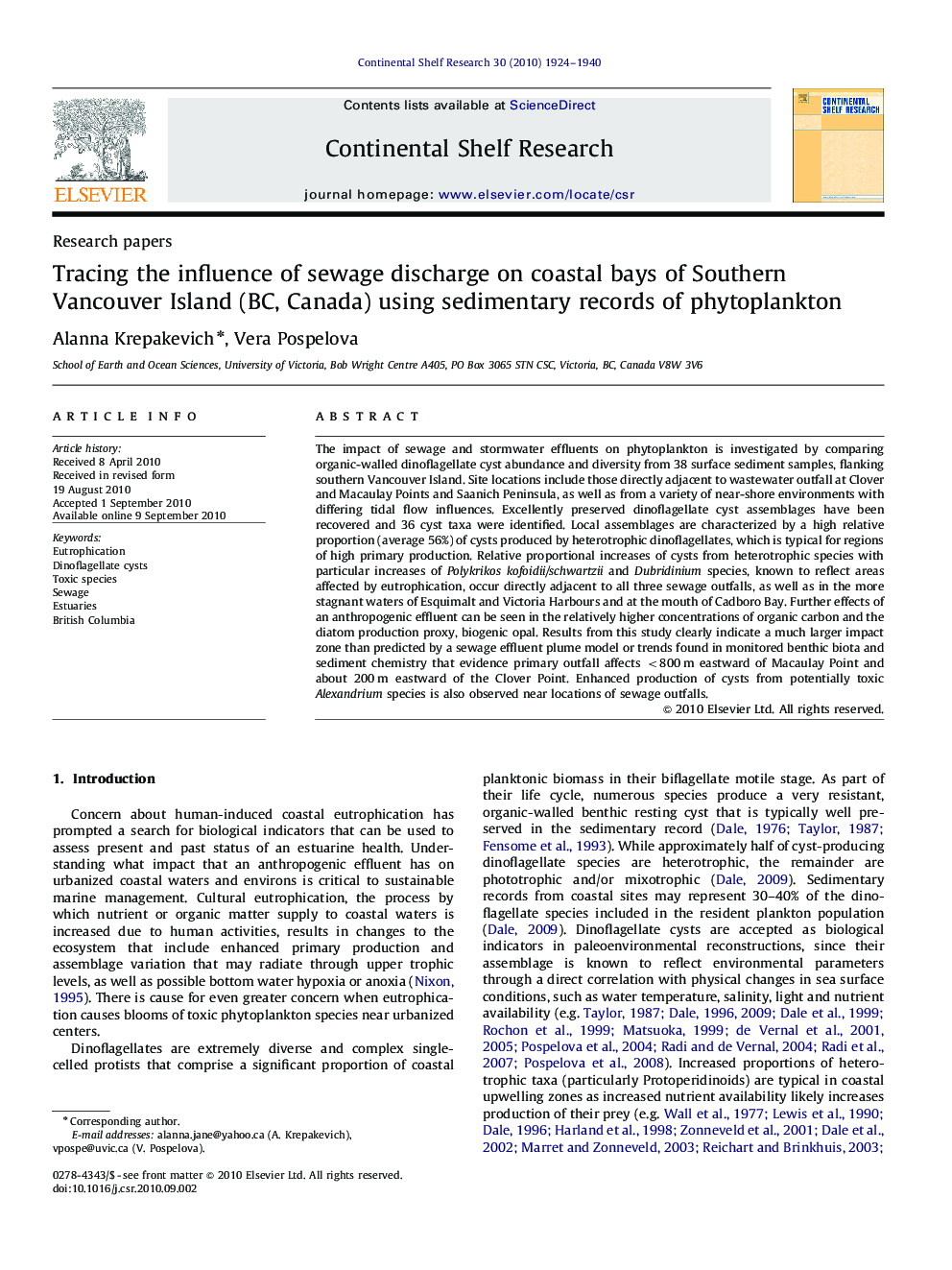| Article ID | Journal | Published Year | Pages | File Type |
|---|---|---|---|---|
| 4532815 | Continental Shelf Research | 2010 | 17 Pages |
The impact of sewage and stormwater effluents on phytoplankton is investigated by comparing organic-walled dinoflagellate cyst abundance and diversity from 38 surface sediment samples, flanking southern Vancouver Island. Site locations include those directly adjacent to wastewater outfall at Clover and Macaulay Points and Saanich Peninsula, as well as from a variety of near-shore environments with differing tidal flow influences. Excellently preserved dinoflagellate cyst assemblages have been recovered and 36 cyst taxa were identified. Local assemblages are characterized by a high relative proportion (average 56%) of cysts produced by heterotrophic dinoflagellates, which is typical for regions of high primary production. Relative proportional increases of cysts from heterotrophic species with particular increases of Polykrikos kofoidii/schwartzii and Dubridinium species, known to reflect areas affected by eutrophication, occur directly adjacent to all three sewage outfalls, as well as in the more stagnant waters of Esquimalt and Victoria Harbours and at the mouth of Cadboro Bay. Further effects of an anthropogenic effluent can be seen in the relatively higher concentrations of organic carbon and the diatom production proxy, biogenic opal. Results from this study clearly indicate a much larger impact zone than predicted by a sewage effluent plume model or trends found in monitored benthic biota and sediment chemistry that evidence primary outfall affects <800 m eastward of Macaulay Point and about 200 m eastward of the Clover Point. Enhanced production of cysts from potentially toxic Alexandrium species is also observed near locations of sewage outfalls.
